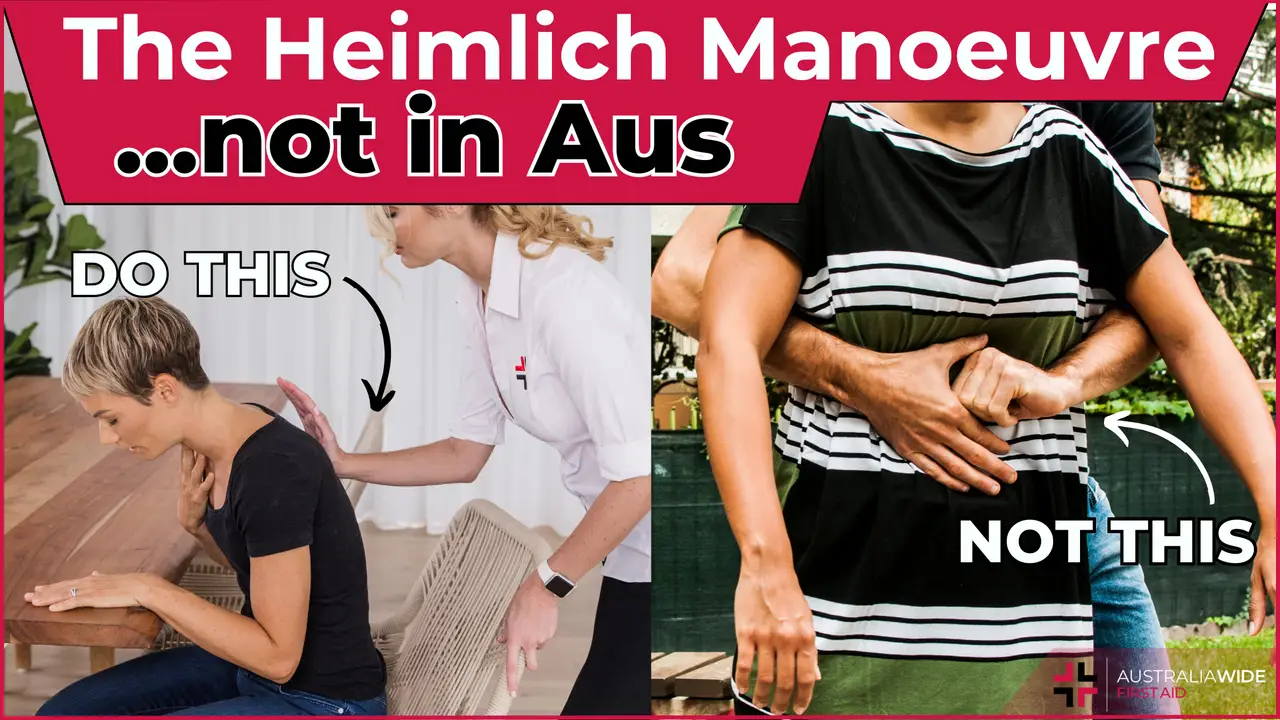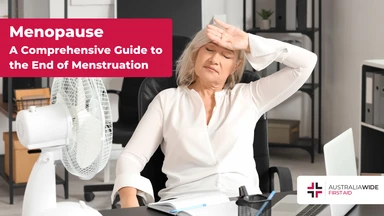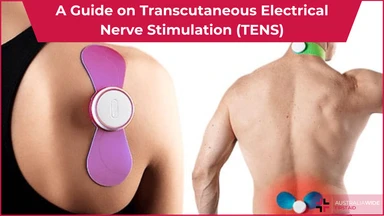The Heimlich Manoeuvre


In America, the first of June is National Heimlich Manoeuvre Day, a day to celebrate Henry Heimlich's namesake method for treating choking casualties.
Many people are familiar with the term "Heimlich Manoeuvre", as it is often shown in film and on television as the best way for relieving airway obstructions.
However, despite its popularity, the Heimlich Manoeuvre is actually not as well-regarded in real life. In fact, in Australia, the Heimlich Manoeuvre is not accepted, and it is recommended that choking victims are instead treated with a combination of back blows and chest thrusts. As such, we are going to use this opportunity to discuss the history of the Heimlich manoeuvre and how it is used today.
The Heimlich manoeuvre, which falls under the umbrella of abdominal thrusts, is a first aid technique that was developed with the intention of dislodging foreign objects from obstructing the upper airway.
To perform the Heimlich manoeuvre, the first aid responder must stand behind the casualty, grasp their hands together just above the casualty's bellybutton, and then exert pressure on the bottom of the casualty's diaphragm.
It was believed that this manoeuvre would act much like a cough, in that it would compress the lungs and exert enough pressure on the foreign object to expel it from the trachea.

Henry Heimlich, an American thoracic surgeon and medical researcher, is widely credited as the inventor of the Heimlich manoeuvre. He first published his views about the manoeuvre in an informal article in 1974. In 1975, after it was widely reported that a retired restaurateur had used the manoeuvre to rescue a choking victim, Henry formally described the manoeuvre in two medical journal papers.
Henry promulgated the Heimlich manoeuvre as a safer and more effective alternative to back slaps, the latter of which he claimed had been proven to cause death by lodging foreign objects into the windpipe. In 1982, a Yale study partially funded by Heimlich's foundation persuaded the American Heart Association, a non-profit organisation in the United States that fosters cardiovascular research, education, and care, to stop recommending back blows for dealing with choking.
As a result, from 1985 to 2005, the American Heart Association and the American Red Cross, a non-profit organisation that provides and educates on disaster relief, exclusively recommended the Heimlich manoeuvre as a treatment for choking. Head to the following website for more information about Henry Heimlich's colourful career.
From 2006, both the American Heart Association and the American Red Cross heavily downgraded the use of the Heimlich manoeuvre as a treatment for choking.
This was because studies showed that applying intrathoracic pressure inwards, as with chest thrusts and back slaps, was just as effective as applying intrathoracic pressure inwards and upwards, as with the Heimlich manoeuvre. Likewise, researchers argued that chest thrusts and back slaps may be easier to perform and less likely to inflict injury to the ribcage or upper abdominal muscles, compared to the Heimlich manoeuvre.
Nowadays, the American Heart Association and the American Red Cross recommend that conscious choking casualties be treated with the "five and five" technique - that is, by first applying five back slaps and then five abdominal thrusts, if the back slaps fail to remove the airway obstruction. Meanwhile, for unconscious choking casualties, the American Heart Association and the American Red Cross recommend the use of chest thrusts.
Funnily enough, abdominal thrusts (including the Heimlich manoeuvre) have never been recommended in Australia as a treatment for choking casualties.
In fact, the Australian Resuscitation Council (ARC), which coordinates how resuscitation techniques and terminology are used throughout Australia, actually does not accept the use of abdominal thrusts, as it has been associated with life-threatening complications in over 50 observational studies, including perforation of the gastrointestinal tract and damage to the abdominal aorta. The abdominal aorta is a large artery that carries oxygen-rich blood away from the heart to the rest of the body.
Instead, the ARC advocates for the use of back blows and chest thrusts in rapid succession to relieve airway obstructions. Please see below for a description and video demonstration on how to perform back blows and chest thrusts.

In the case of a mild or partial obstruction, where the foreign body is at the entrance of the trachea and the casualty is coughing effectively, do not slap the casualty on the back. This may cause the casualty to inhale the object and cause a complete obstruction. Instead, encourage the casualty to keep coughing until the obstruction is relieved. If the obstruction does not clear, and the casualty becomes increasingly distressed or can no longer cough effectively, proceed to deliver back slaps and chest thrusts as described below.
More information about the signs, symptoms, and treatments of choking can be found in the ARC's Airway Guideline.
Henry Heimlich claimed to have used his namesake manoeuvre in May 2016 at his senior living community to save the life of a fellow resident. He was 96 years old.
Disclaimer: This article is for informational purposes only. It does not constitute, replace, or qualify as any form of first aid training.

March 25, 2025
Explore non-traditional paths to sobriety, including mindfulness, yoga, nutritional therapy, and community-based support, for a personalized approach to recovery.

September 7, 2022
Menopause is the final period, when a woman, trans man, or non-binary person assigned female at birth's ovaries run out of eggs and the body can no longer ovulate. Menopause comes with several symptoms, complications, and treatment options.

July 26, 2024
Transcutaneous Electrical Nerve Stimulation (TENS) is a therapeutic method of pain relief. It utilises an electrical device that emits electrical currents and streams the impulses via electrode patches attached to the skin.